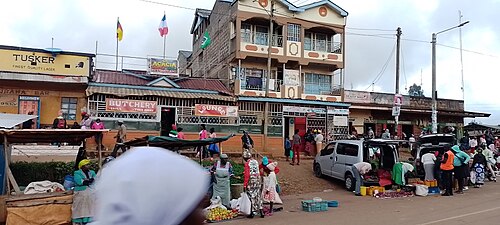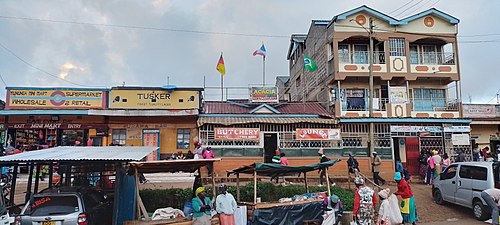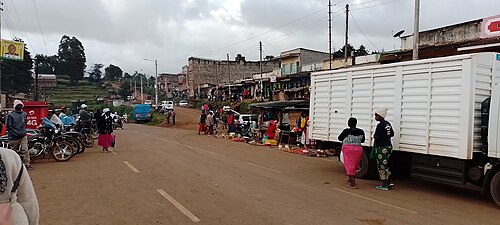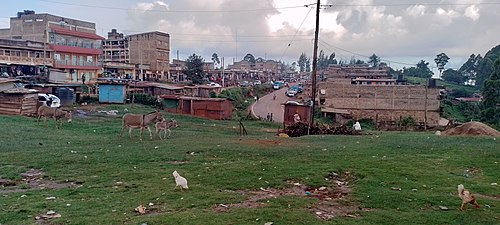This article needs additional citations for verification .(October 2025) |
Mununga | |
|---|---|
| Coordinates: 0°42′S37°01′E / 0.7°S 37.02°E | |
| Country | Kenya |
| Province | Central Province |
| Time zone | UTC+3 (EAT) |











Mununga is a settlement in Kenya's Central Province. An alternate name for this area is "Mununca".
Mununga is in central Kenya, Muranga county. [1] It sits in the Kigumo constituency, inside the Kinyona location. Mununga is a Kikuyu name meaning "smelling place." Mununga was known as Gitegenye, but later in the 1950's, received its name 'mununga' from the foul smell of unburied, decomposing bodies of anti-British resistance troops. Said troops allegedly met their terrible death at the hands of Chief Njiiri wa Karanja; a royal and right man to the British Empire, who fought the Mau Mau resistance with all forces at his disposal. [2] Mununga was one of rebellions' "bedrooms," where it is believed most Mau Mau generals held their warfare meetings here before retreating back into the Aberdare forest. [3] [4] [5]
Mununga is made up of villages like Kamahiga, Mahehe, Mukoma Gathaiti, Muchagatha and Kariti. It's one of the towns that MauMau road have slashed through making it a fast growing town in Muranga county.
The Irati river, Gitaigua and Maragua serves Mununga with pure mineral water from the mountain of Aberdare. [6] Gacharage tea factory is also located in Mununga.
